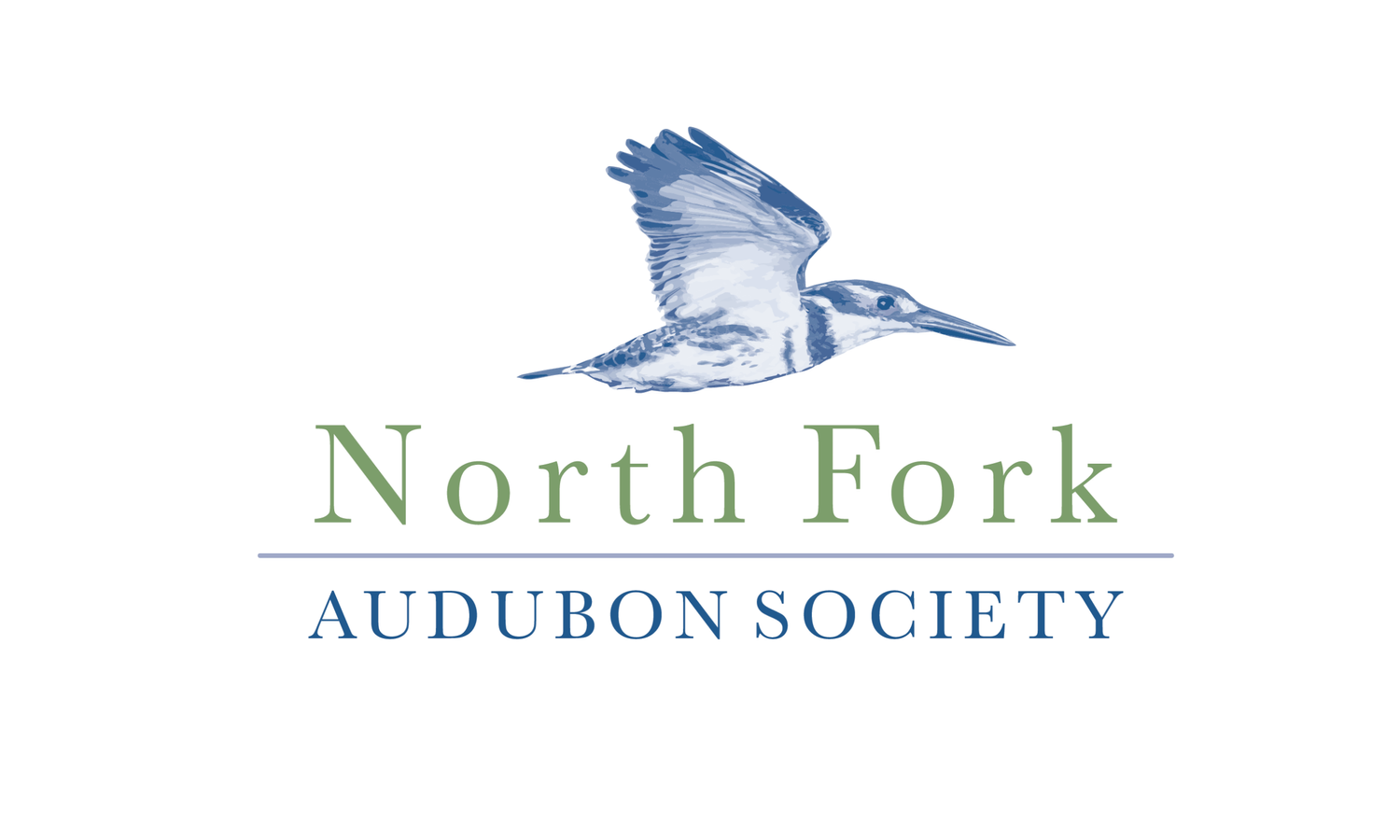Berries for Birds
A Community Effort to Provide Habitat for Birds
Events:
12/10/2025 from 7-8:30pm: Berries for Birds: A Community Effort to Provide Habitat for Birds Zoom Presentation. Click here for more information and to register!
Videos:
Resources:
Berries for Birds Garden at Inlet Pond County Park
The Berries for Birds Garden, designed by Robin Simmen, showcases berrying plants native to the North Fork that feed migrating and overwintering birds. To demonstrate how to protect these species from deer browse, NFAS sited this fenced garden just east of the Red House. Soil remediation came first; it took a couple of years for NFAS volunteers to remove the invasive plants, including mugwort and Buddleia butterfly bushes, from this old garden area.
Meanwhile, a deer fence to protect the future garden was built in late 2023. Two styles of deer fencing—three walls of 8-foot-tall woven wire, as well as a double line of 4-foot-tall fences, spaced 5 feet apart, which deer won’t jump—are replicable examples for anyone wanting to do the same.
In November 2024, volunteers planted the garden with 24 native species, including trees, shrubs, perennials, and vines, many of which were donated by ReWild Long Island, to grow up and around the pergola that surrounds the garden. In October 2025, the garden will be dedicated to Rick Kedenburg, a NFAS board member and longtime birdwatcher leader who died in 2023; his generosity helped make this garden possible.
Berries for Birds Garden Dedication to the late Rick Kedenburg
On October 11, 2025 we dedicated this special garden in honor of the late Rick Kedenburg whose extraordinary volunteer service and generous support made the Berries for Birds Garden possible.
North Fork Sun wrote an article about this event, click here to read it!
East End Beacon wrote an article about this event, click here to read it!
Bird migration research has confirmed a precipitous drop in the migrating bird population. A major reason for this decline is their loss of habitat: native trees and shrubs that provide the calorie-rich berries migrating and overwintering birds need to survive. Invasive plant species are overwhelming and replacing our native plant communities. To address these problems, North Fork Audubon Society is working in collaboration with Dr. Douglas Tallamy’s Homegrown National Park®/Start a New Habitat® to encourage people to create new ecological networks by planting native berry-producing trees and shrubs where we live and work. Our community initiative, Berries for Birds, uses his model of cooperative conservation.
Native plants co-evolved with native birds over millions of years; they are mutually dependent. Birds eat the fruits, buds, and nectar of specific plants and, by doing so, pollinate plants and disperse their seeds. Plants evolve in ways to promote seed dispersal. The small fruit size of most plants and shrubs are the perfect size for a bird’s open mouth. Fruits ripen when bird migration reaches its peak. Birds have an acute sense of vision and color discrimination. Plants that depend on birds to disperse their seeds produce brightly colored fruits and leaves that attract birds. Virginia creeper, wild grape, sassafras, and gray dogwood don’t have colorful fall fruits, but their bright stems and brilliant fall leaves attract birds when their fruits ripen.
Varying by species, plants contain different amounts of sugars, fatty acids and other nutrients, and ripen in different seasons. Sweet fruits predominant in the spring; for example, on our native serviceberry, wild cherry, and mulberry trees. Fall migrating birds require fruits high in fatty acids, available then on spicebush, magnolia, sassafras, and flowering dogwoods. Many fall fruits have lower lipid contents but are less prone to turn rancid and rot on the plant. These fruits, available even later in the fall, are found on mountain ash, hawthorn, and cranberry viburnum. Nannyberry fruits shrivel on the vine and thus remain available for wintering robins, bluebirds, and flickers. Persistent fruits such as bayberry are also vital for such early spring bird migrants as the yellow-rumped warbler and tree swallow during a time when cold limits their typical diet of flying insects.
Birds depend on the fat content of fall berries to fuel migration and for overwintering. However, berries differ in nutritional value. Berries from nonnative invasive species—autumn olive, glassy buckthorn, Japanese honeysuckle, and multiflora rose—are high in sugar but contain less than one percent fat. In contrast, berries from natives—Virginia creeper, wax myrtle, arrowwood viburnum, spicebush and poison ivy—are often fifty percent fat by weight, lifesavers for winter birds. Even worse, nearly all invasive shrubs produce their berries in autumn, thus depriving birds of energy reserves if those are the only berries available.
Please join North Fork Audubon Society’s Berries for Birds effort to support migrating and overwintering birds by planting native berry-producing trees and shrubs in your own gardens. By so doing, you will be part of the solution to the problem of habitat loss and will help create a new conservation corridor for birds on the North Fork. For more information, email info@northforkaudubon.org.
To download and read the Homegrown National Park Brochure, please click here.

